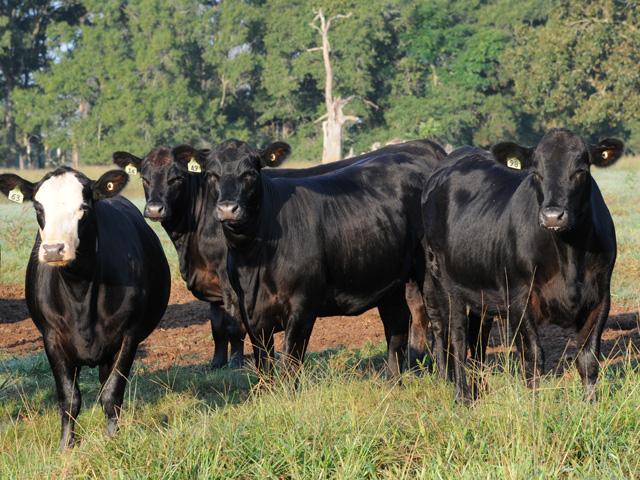Heifer Management Key for Longevity
Several Factors Important in Managing Heifers for Longevity, Profitability
OMAHA (DTN) -- The correct management of young cows will help them be bred sooner and stay in the herd longer. Replacement heifers who cycle in the first 21 days of the breeding season stay in the herd longer and the cow-calf producer can depend on them to be productive.
Proper nutrition is essential for these females to have longevity in the herd. In addition, early weaning can also be used to improve reproductive performance of young cows.
BREED HEIFERS EARLY
In a presentation titled "Managing Young Cows for Longevity and Profitability in Today's Economic Environment" (https://www.youtube.com/…), University of Missouri Beef Reproduction Extension and Research Specialist Thiago Martins discussed different strategies cow-calf producers can use to assure their heifers breed early in the season. Studies show the earlier these heifers get bred, the more likely they are to stay in the herd.
Postpartum anestrus is the main cause of reproductive failure in beef cattle, Martins said. Postpartum anestrus is the period all female cows go through in which they do not experience estrous cycles after giving birth.
One study from the University of Florida focused on the cyclicity of both older and younger beef cows in a 70-day window with a body condition score (BCS) of five. Of the mature cows in the study, 56% cycled during this time while only 6% of first-calf heifers did and second-calf heifers were at 12%.
"Younger cows tend to have a smaller proportion of pregnancies than older and mature cows," Martins said.
Martins said it is important to breed first-calf heifers earlier than older cows due to postpartum anestrus. Replacement heifers that get bred in the first 21 days of the breeding season stay longer in the herd, he said.
P[L1] D[0x0] M[300x250] OOP[F] ADUNIT[] T[]
WATCH NUTRITION
Another important aspect of heifer management is making sure they have proper nutrition.
Martins said several factors affect the duration of postpartum anestrus in cows. One large factor is the nutrition of these younger cows.
It is important to manage heifers correctly to keep gaining weight to get them to breed back quickly, he said. First-calf heifers tend to lose BCS compared to mature cows.
Low BCS heifers have lower pregnancy rates than heifers with higher BCS, Martins said. First-calf heifers can lose weight easily from calving to 80 days postpartum.
"We want heifers to calve at moderate BCS and not lose any weight," Martins said.
EARLY WEANING KEY
Early weaning is often a management practice used during times of drought, but this method can also be utilized to improve the reproductive performance of young cows.
Martins said early weaning will increase feeding costs initially but does ultimately pay off with higher pregnancy rates. In addition, there are also potential financial benefits to this practice.
Early weaning positively influences the reproductive performance of first-calf heifers, he said.
One study stated conception rates jumped 38% when first-calf heifers were weaned early (6 to 8 weeks of age) versus normal weaning (7 months of age). The number of days of calving to conceptions decreased from 91 days to 73 days with the early weaned heifers, he said.
The economics of early weaned, first-calf heifers shows there can be a financial advantage.
Martins said in one study researchers saw a 93% pregnancy rate in normal weaned first-calf heifers and a 95% pregnancy rate in early weaned calves. While a 2% difference does not seem like much, the total revenue for the entire cowherd was $1,247 more at the higher pregnancy rate.
"It doesn't seem like much with a 2% difference, but this slight change did yield more income," Martins said.
Martins also said estrous synchronization programs are important allies to improving the reproductive performance of beef cow herds.
DTN recently wrote an article from Kansas State University Extension detailing a pre-breeding heifer checklist: https://www.dtnpf.com/….
Russ Quinn can be reached at Russ.Quinn@dtn.com
Follow him on X, formerly Twitter, @RussQuinnDTN
(c) Copyright 2024 DTN, LLC. All rights reserved.




